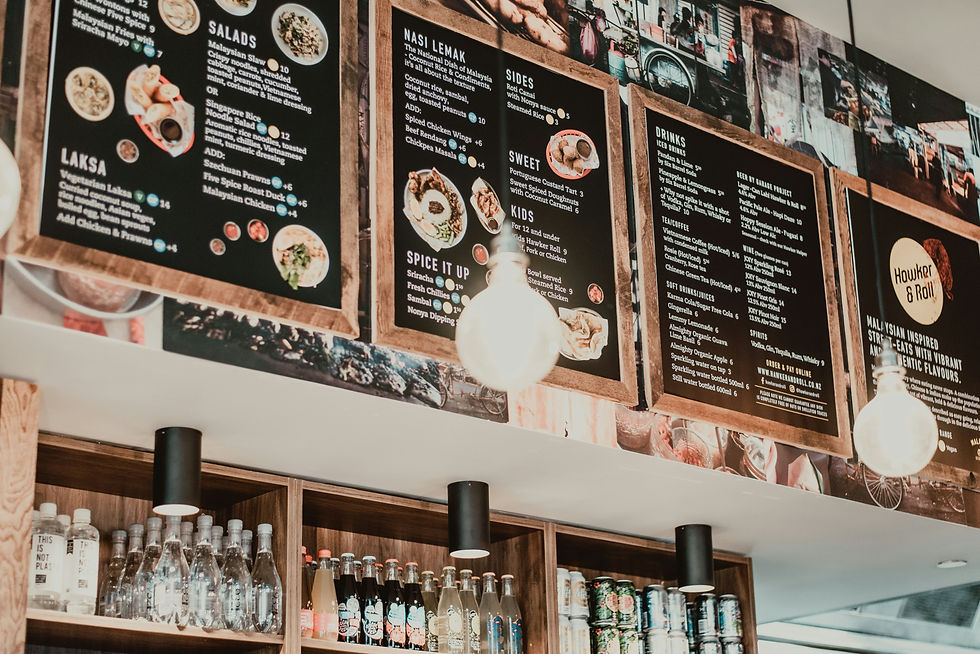Maximizing Menu Profitability: Pricing Strategies and Menu Optimization
- Om Modi
- Nov 6, 2024
- 3 min read
In the competitive world of food and beverage (F&B) businesses, menu profitability is essential for success. Designing a menu that not only pleases the palate but also maximizes revenue requires a combination of effective pricing strategies and menu optimization techniques. By utilizing tools like food cost calculators, inventory management software for restaurants, and menu costing software, businesses can streamline operations and ensure they’re maximizing their profits. Here are five key strategies for boosting menu profitability:

1. Strategic Pricing for Maximum Profit Margins
Strategic pricing is the foundation of maximizing menu profitability. By using food cost management software and restaurant inventory tracking, businesses can calculate the true cost of each dish and set prices accordingly. This approach ensures that menu prices are optimized based on ingredient costs, labour, and market demand, all while maintaining a competitive edge. Pricing strategies such as bundling, anchoring, or tiered pricing can also encourage customers to select higher-margin items, increasing overall profitability. Integrating restaurant POS systems and F&B management tools for profitability makes pricing adjustments seamless and efficient, ensuring consistent margins.
2. Menu Engineering for Maximum Impact
Menu optimization involves designing and organizing the menu to increase profitability. With tools like menu costing software, F&B inventory optimization, and restaurant POS systems, restaurants can easily identify high-margin items and strategically place them in prominent positions on the menu. Visual cues such as bold fonts, borders, or icons can highlight these profitable items and encourage customers to make more lucrative choices. By applying data-driven insights from restaurant performance metrics and F&B data analytics tools, businesses can continuously refine their menu layout to drive sales. Using inventory solutions for small restaurants helps streamline the process of tracking popular and profitable dishes.
3. Dynamic Pricing to Capitalize on Demand Fluctuations
Dynamic pricing is a powerful tool for maximizing revenue. By leveraging technology and restaurant management tools, businesses can adjust menu prices in real-time based on factors like demand, time of day, and seasonality. For instance, during peak hours or special events, restaurants can increase prices on high-demand items, while offering promotions or discounts during slow periods. Inventory solutions for small restaurants and restaurant accounting solutions help businesses track these changes effectively, ensuring prices remain competitive while maximizing profit margins. Utilizing food and beverage software solutions ensures real-time price adjustments without disrupting operations.
4. Bundle and Combo Offers for Increased Perceived Value
Offering bundled or combo deals is a proven method to increase perceived value and boost revenue. By using inventory management software for restaurants, businesses can strategically pair high-margin dishes with lower-cost items, creating meal deals that encourage customers to spend more. Additionally, combining popular drinks or appetizers with entrees can enhance the dining experience while increasing sales. These types of offers not only increase the average check size but also improve the customer’s perceived value of the meal, encouraging repeat visits. This strategy ties into cost control in restaurants by ensuring that the combination of items remains profitable while adding value for the customer.
5. Continuous Menu Analysis and Adaptation
Regularly analyzing menu performance is critical for long-term success. By utilizing restaurant inventory management and F&B data analytics tools, businesses can track the profitability of each dish, monitor customer preferences, and identify trends. If certain menu items aren’t performing as expected, adjustments can be made in real time. Whether it’s adjusting portion sizes, changing recipes, or replacing underperforming items with more profitable options, constant menu optimization ensures the restaurant remains competitive. Menu costing software and food inventory solutions help manage ingredient costs effectively, ensuring that menu prices reflect actual usage and contribute to better cost control in restaurants. Conclusion
Maximizing menu profitability requires a mix of strategic pricing, menu engineering, dynamic pricing, and regular performance analysis. By utilizing inventory management software, menu costing software, and F&B data analytics tools, restaurants can optimize their pricing, reduce waste, and boost profitability. Continuously adapting the menu based on data and trends ensures that businesses remain competitive and financially successful in the dynamic F&B landscape. Maximizing Menu Profitability: Pricing Strategies and Menu Optimization.



Comments